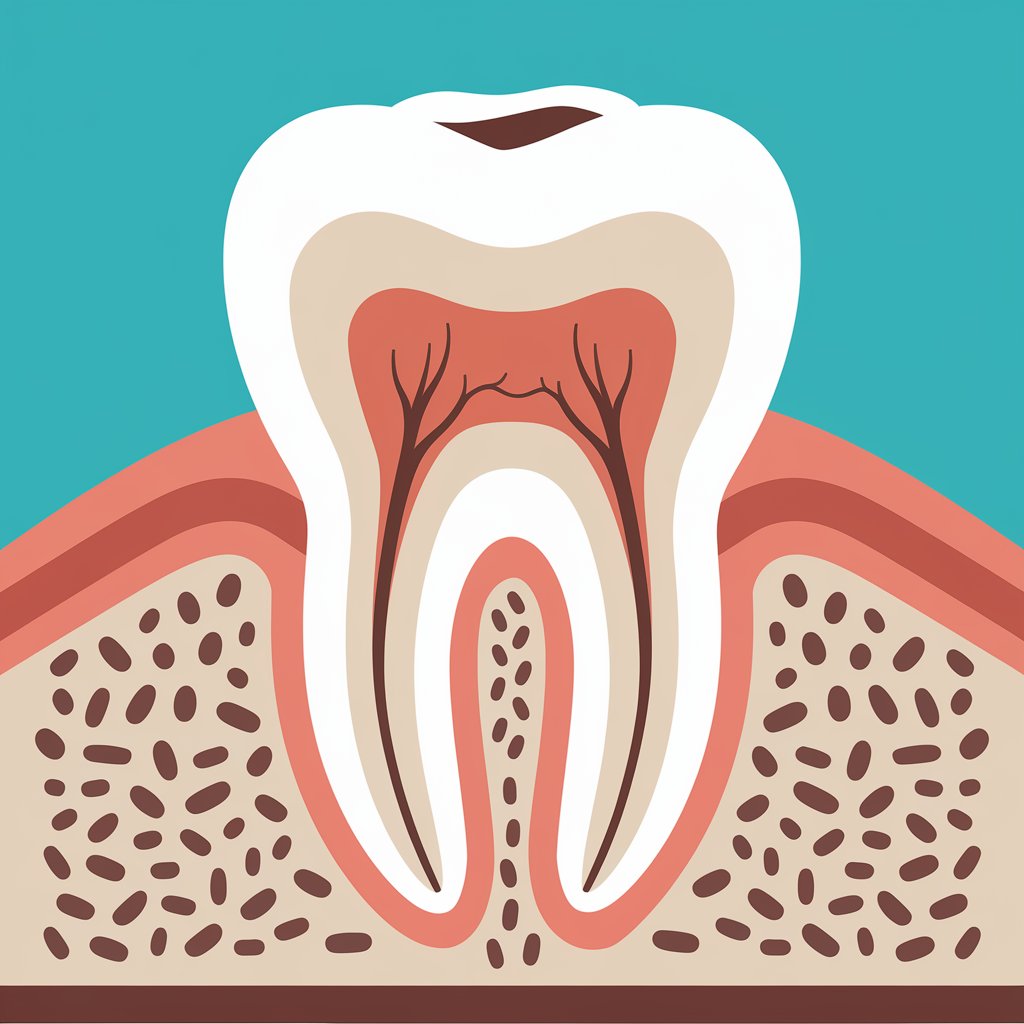Your cart is currently empty!

Cementum for Beginners
Cementum, a specialized calcified tissue covering the roots of teeth, plays an essential role in anchoring teeth to the surrounding alveolar bone. Though often overshadowed by enamel and dentin in discussions of dental anatomy, cementum is crucial for maintaining the stability and functionality of teeth within the jaw. This article explores the composition, structure, types,…
Cementum, a specialized calcified tissue covering the roots of teeth, plays an essential role in anchoring teeth to the surrounding alveolar bone. Though often overshadowed by enamel and dentin in discussions of dental anatomy, cementum is crucial for maintaining the stability and functionality of teeth within the jaw. This article explores the composition, structure, types, and function of cementum, as well as its role in periodontal health.
Composition and Structure
Cementum shares similarities with both bone and dentin but has unique features that allow it to perform its specific functions. Its composition is as follows:
- 50–55% Inorganic Material: Composed primarily of hydroxyapatite crystals, this mineral content gives cementum its strength and durability.
- 45–50% Organic Material and Water: The organic component is mostly collagen fibers, which provide flexibility and resilience, while water helps maintain tissue integrity.
Cementum is avascular, meaning it does not have its own blood supply. Instead, it relies on diffusion from surrounding periodontal tissues for nourishment. This property makes it less susceptible to systemic influences but also limits its capacity for repair and regeneration.
Functions of Cementum
Cementum has a range of important functions, including:
- Attachment of Teeth to Bone: Cementum serves as the medium for the attachment of periodontal ligament fibers, which connect the tooth root to the surrounding alveolar bone. This attachment is critical for the tooth’s stability and function.
- Protection of Root Dentin: By covering the root surface, cementum protects the underlying dentin from exposure to external factors, such as bacterial invasion or wear.
- Adaptive Remodeling: Cementum can undergo limited deposition over time, allowing for adjustments in the tooth’s position within the jaw, often in response to occlusal forces or orthodontic treatment.
Types of Cementum
Cementum can be classified into two primary types based on the presence or absence of cellular components:
- Acellular Cementum:
- Found primarily in the cervical third of the root.
- Formed first during tooth development.
- Contains densely packed collagen fibers but lacks cells within its structure.
- Plays a primary role in anchoring the tooth to the periodontal ligament.
- Cellular Cementum:
- Found mainly in the apical third of the root and in areas of root bifurcation.
- Contains cementocytes, which are cells embedded within lacunae in the cementum.
- Formed later in life, often as a response to occlusal forces or tooth movement.
- Involved in adaptive and reparative processes.
Development of Cementum (Cementogenesis)
Cementogenesis occurs during tooth development, beginning after the formation of the root dentin. It is carried out by cementoblasts, specialized cells derived from the dental follicle.
- Initial Formation:
Cementoblasts secrete an organic matrix, rich in collagen, onto the surface of the root dentin. This unmineralized layer is known as cementoid. - Mineralization:
Calcium and phosphate ions are deposited into the cementoid, forming hydroxyapatite crystals. This process transforms cementoid into mature cementum. - Cementoblast Activity:
Cementoblasts continue to function throughout life, allowing for the deposition of additional cementum in response to functional demands or injury.
Unique Properties of Cementum
Cementum possesses several distinctive features that differentiate it from other dental tissues:
- Continuous Deposition: Unlike enamel, which is static after formation, cementum can be deposited throughout life, accommodating changes in tooth position or occlusal forces.
- Resilience to Resorption: Cementum resists resorption more effectively than bone, making it a stable anchor for the periodontal ligament.
- Lack of Vascularity: Its avascular nature makes cementum more resistant to systemic changes, although it also limits its repair potential.
Clinical Relevance
Cementum plays a vital role in maintaining periodontal health. Damage or loss of cementum can compromise the attachment of the periodontal ligament, leading to increased tooth mobility or even tooth loss. Conditions such as cementum resorption or excessive cementum deposition (hypercementosis) can also pose challenges in dental treatment.
Periodontal disease often affects cementum, as bacterial toxins can penetrate it and disrupt the attachment of the periodontal ligament. Understanding the structure and function of cementum is crucial in managing these conditions and preserving tooth stability.
Conclusion
Cementum is a remarkable tissue that serves as the foundation for tooth attachment and plays a critical role in maintaining the stability of the dentition. Its ability to adapt and respond to functional demands highlights its importance in dental anatomy and periodontal health. Though often overlooked, cementum is indispensable to the integrity of the tooth-supporting structures, underscoring the need for its careful study and preservation. By understanding its composition, function, and development, we gain valuable insights into the complex interplay of tissues that maintain oral health.


